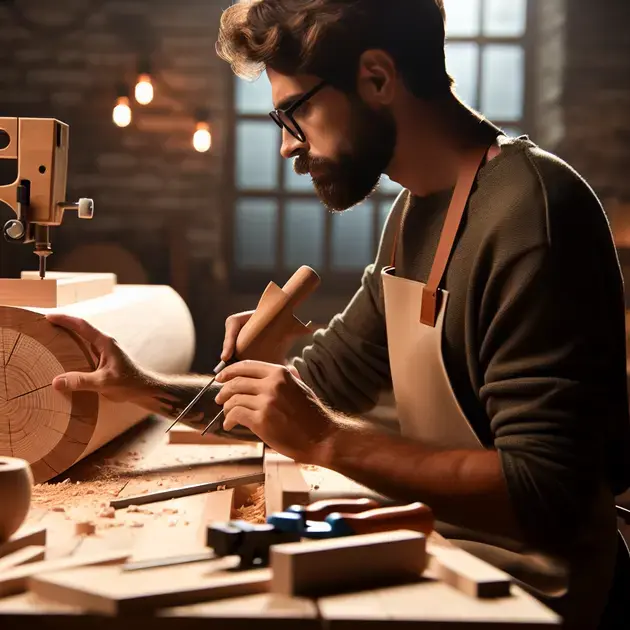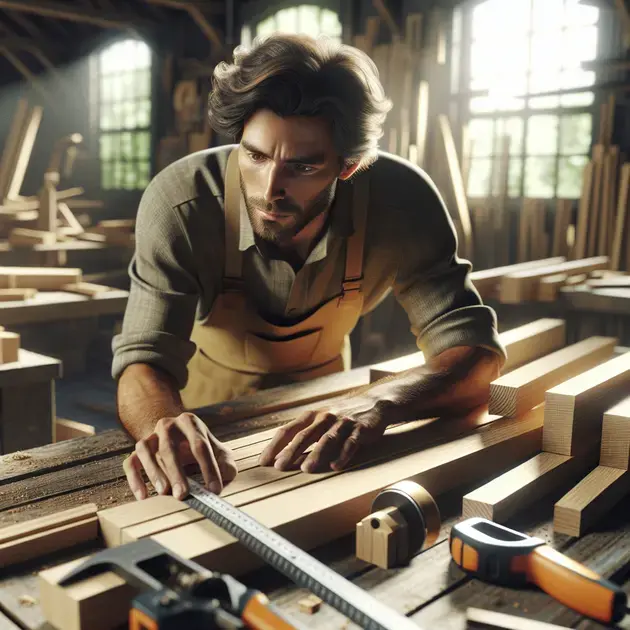Woodworking is a timeless craft that allows beginners to unleash their creativity and build beautiful, functional pieces. In this ultimate guide to woodworking projects for beginners, we will cover everything you need to know to get started on your woodworking journey.
From choosing the right tools and materials to mastering basic techniques, this guide will provide step-by-step instructions and tips to help you tackle your first woodworking project with confidence.

Essential Tools for Beginner Woodworkers
As a beginner woodworker, it’s important to have the right tools to start your woodworking projects successfully. Here are some essential tools you will need:
1. Tape Measure
A tape measure is crucial for accurately measuring wood and ensuring your cuts are precise. You can find a variety of tape measures at your local hardware store or online at sites like Home Depot or Lowe’s.
2. Hammer
A hammer is essential for driving nails into wood and assembling your projects. Look for a sturdy hammer with a comfortable grip for ease of use.
3. Saw
A saw is necessary for cutting wood to the desired size and shape. Consider starting with a basic handsaw or a circular saw for more advanced projects.
4. Chisels
Chisels are handy for intricate woodworking tasks such as carving and shaping wood. You can purchase a set of chisels at woodworking specialty stores like Rockler or Woodcraft.
5. Screwdrivers
Screwdrivers are essential for driving and removing screws in your woodworking projects. Invest in a set of different sizes and types to accommodate various screw heads.
Understanding Different Types of Wood for Projects
When starting woodworking projects, it’s important to understand the different types of wood available and their characteristics. Here are some common types of wood used in woodworking:
1. Pine
Pine is a softwood that is easy to work with and is commonly used for projects like furniture and cabinetry. You can find pine wood at lumberyards or online at retailers like The Home Depot.
2. Oak
Oak is a hardwood known for its strength and durability. It is often used for high-quality furniture and flooring. You can purchase oak wood at specialty hardwood stores or online at sites like Woodworkers Source.
3. Maple
Maple is a versatile hardwood that is popular for its light color and smooth grain. It is used for a variety of woodworking projects, including cutting boards and cabinets. You can buy maple wood at woodworking stores like Rockler.
4. Birch
Birch is a hardwood that is known for its pale color and fine grain. It is commonly used for plywood, cabinets, and furniture. Birch wood can be purchased at lumberyards or online retailers like Lowe’s.
5. Mahogany
Mahogany is a luxurious hardwood that is prized for its rich color and durability. It is often used for high-end furniture and musical instruments. You can find mahogany wood at specialty woodworking stores or online at suppliers like Bell Forest Products.
Tips for Perfecting Basic Woodworking Techniques
Mastering basic woodworking techniques is essential for creating quality projects. Here are some tips to help you perfect your woodworking skills:
1. Practice Proper Safety Measures
Always wear safety goggles and ear protection when operating power tools. Familiarize yourself with the proper way to use each tool to avoid accidents and injuries.
2. Start with Simple Projects
Beginners should start with simple projects like a basic bookshelf or picture frame to build confidence and skills. As you gain experience, you can tackle more complex projects.
3. Learn Proper Tool Maintenance
Regularly clean and sharpen your tools to ensure optimal performance. You can find tutorials on tool maintenance on woodworking websites like FineWoodworking.com.
4. Take Woodworking Classes
Consider taking woodworking classes at your local community college or woodworking school to learn from experienced woodworkers and expand your skills.
5. Join a Woodworking Community
Joining a woodworking community or forum online, such as WoodNet.net or SawmillCreek.org, can provide valuable insight, advice, and inspiration from fellow woodworkers.

**Essential Skills for Mastering Woodworking**
Introduction
Woodworking is a timeless craft that requires a combination of skill, patience, and creativity. To truly master the art of woodworking, there are essential skills that every woodworker should develop. Whether you’re a beginner or have been woodworking for years, honing these skills will not only improve the quality of your projects but also enhance your overall woodworking experience.
Understanding Wood Properties
One of the most important skills for mastering woodworking is understanding the properties of different types of wood. Each type of wood has unique characteristics such as hardness, grain pattern, and durability. By knowing how these properties affect the way wood behaves, you can select the right materials for your projects and ensure that your finished piece will be strong and long-lasting.
Precision Measuring and Cutting
Accurate measuring and cutting are crucial skills in woodworking. Even the smallest error in measurement can result in a flawed project. Mastering the use of measuring tools such as tape measures, rulers, and squares, as well as precision cutting tools like saws and chisels, will help you achieve clean and precise cuts every time.
Joinery Techniques
Joinery is the art of connecting wood pieces together to create a sturdy and seamless structure. There are various joinery techniques such as dovetail joints, mortise and tenon joints, and rabbet joints. Learning and mastering these techniques will not only enhance the strength of your projects but also add a decorative element to your woodworking creations.
Finishing and Sanding
The finishing touches of a woodworking project can make all the difference in its overall appearance. Skills in finishing and sanding involve selecting the right finish for the wood, applying it evenly, and sanding the surface to a smooth and flawless finish. Mastering these skills will elevate the quality of your projects and give them a professional look.
Problem-Solving and Adaptability
In woodworking, unexpected challenges can arise during the project. Having strong problem-solving skills and the ability to adapt to new situations is essential for mastering this craft. From fixing mistakes to adjusting designs on the fly, being able to think creatively and find solutions will help you overcome any obstacles that come your way.
Conclusion
Mastering woodworking requires a blend of fundamental skills that form the foundation of this timeless craft. Understanding the unique properties of different wood types is crucial to selecting the right materials and ensuring durability in your projects. Precision measuring and cutting skills are paramount, as even a slight error can compromise the entire endeavor; mastering these tools will guarantee clean and precise cuts every time.
Joinery techniques play a pivotal role in creating sturdy and visually appealing woodworking pieces. Learning the art of dovetail, mortise and tenon, and rabbet joints not only enhances the structural integrity of your creations but also adds a decorative flair. The finishing touches, such as selecting the appropriate finish, applying it evenly, and meticulously sanding the surface, elevate the overall quality of your projects, presenting them with a refined and professional appearance.
Woodworking is not without its challenges, and honing problem-solving skills and adaptability is key to navigating unexpected obstacles. From rectifying mistakes to improvising designs on the spot, the ability to think creatively and find solutions will ensure a smooth and successful woodworking experience. By mastering these essential skills, woodworkers of all levels can enhance their craftsmanship and enjoy a fulfilling journey in the world of woodworking.